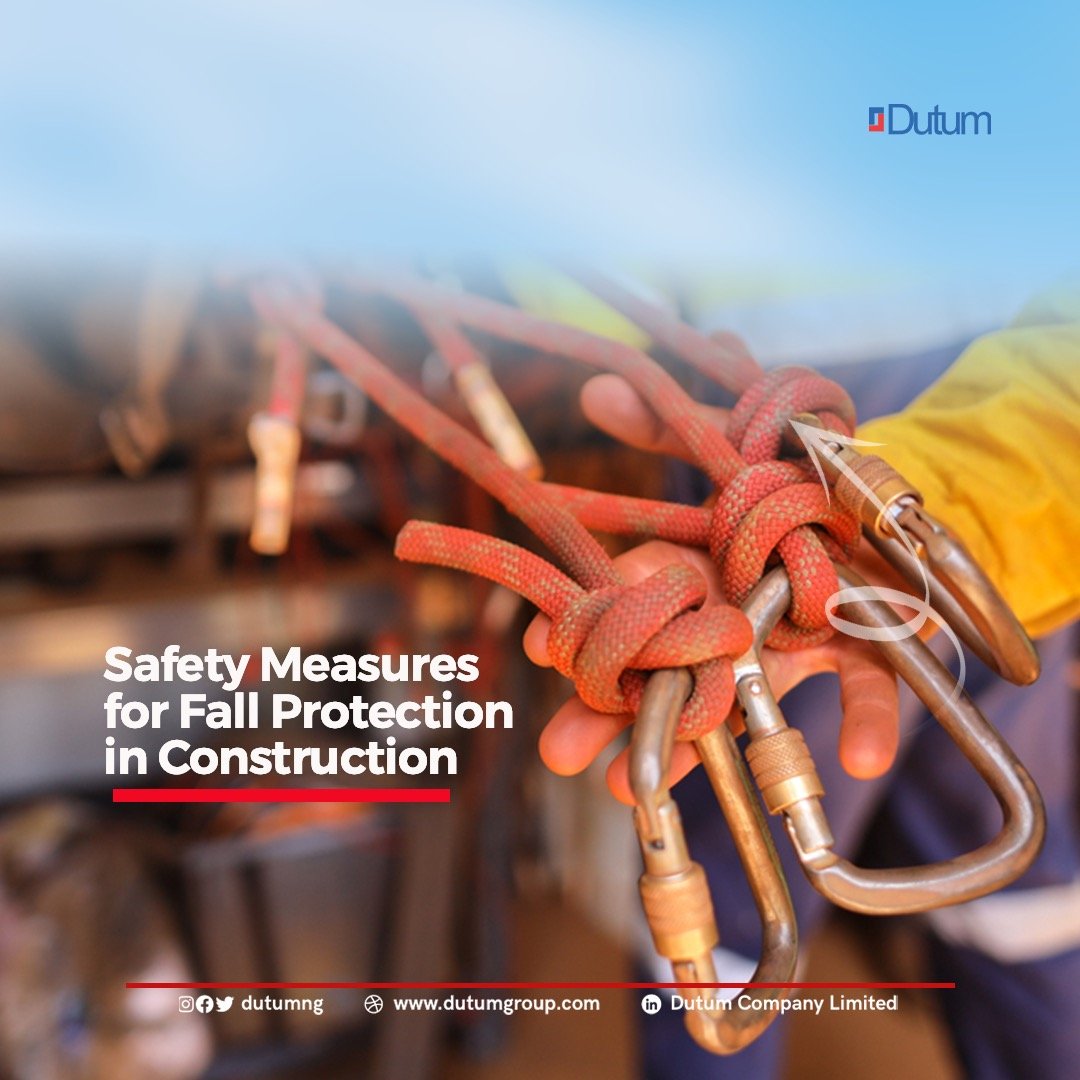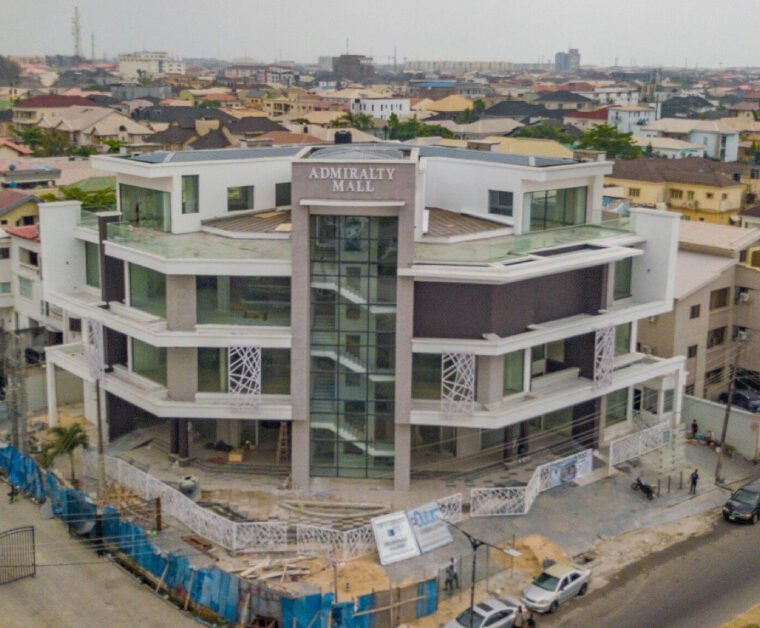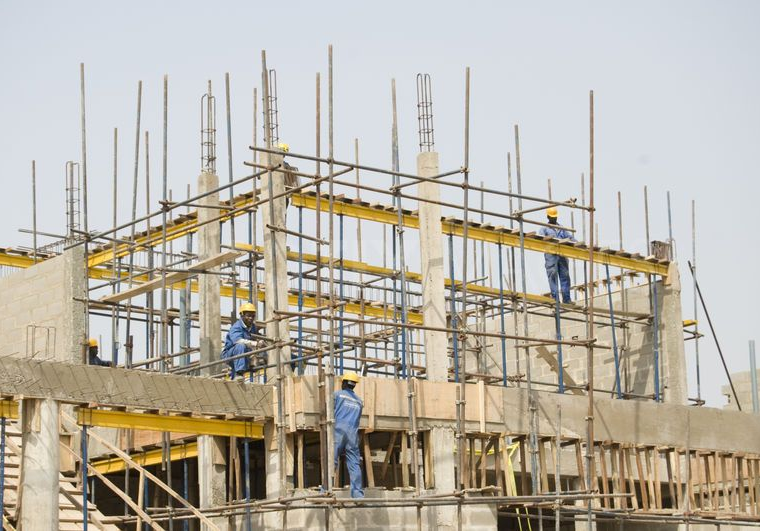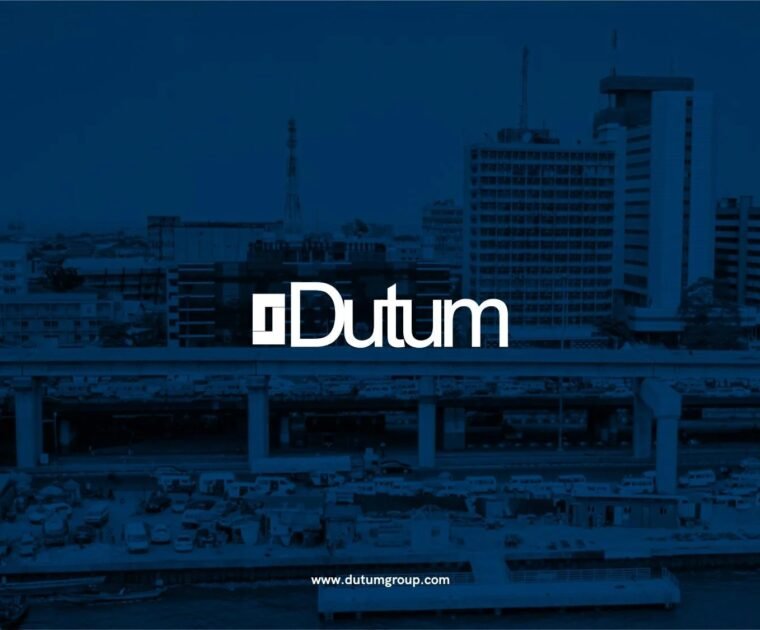In the bustling world of construction, where structures soar toward the sky and dreams take shape, there lies an invisible danger that threatens the safety of the men and women who build our world. It’s a danger that lurks in the shadows, waiting to strike unexpectedly—fall-related accidents. Every year, countless lives are forever altered or tragically lost due to falls on construction sites. But in the face of adversity, we have the power to shape a different narrative—a narrative of safety, protection, and resilience. In this blog post, we delve into the crucial topic of fall protection in construction and unveil the indispensable safety measures that can transform hazardous construction sites into secure havens. Join us on this journey as we unlock the secrets to safeguarding lives, fostering a culture of safety, and erecting a future where every worker returns home unharmed.
10 safety measures for fall protection in construction
Here are 10 safety measures for fall protection in construction, along with their explanations:
- Prepare a Fall Protection Plan
- Conduct a Site-specific Risk Assessment
- Identify Fall Prevention Measures Based on Risk Assessment
- Use Personal Protective Equipment (PPE)
- Use Guardrail Systems
- Use Safety Nets and Catch Platforms
- Use Scaffolding
- Use Fall Arrest Systems
- Training and Education
- Emergency Response and Rescue
1. Prepare a Fall Protection Plan
Preparing a Fall Protection Plan involves several crucial steps to ensure the safety of workers and minimize the risk of falls. It begins by identifying project-specific fall hazards, followed by setting clear objectives and goals for the plan. Assigning responsibilities and roles to individuals or teams involved in the project is vital, as it fosters accountability and a culture of safety. Additionally, establishing effective communication and reporting protocols enables the dissemination of information and prompt identification of hazards, near misses, or incidents. By integrating these elements, a comprehensive Fall Protection Plan can be developed, promoting a safer work environment and safeguarding the well-being of workers engaged in elevated tasks.
2. Conduct a Site-specific Risk Assessment
Conducting a site-specific risk assessment is a critical step in ensuring workplace safety and identifying potential fall hazards. The assessment begins by identifying hazards specific to the site, such as elevated areas, rooftops, ladders, or platforms. Once identified, the severity and likelihood of risks associated with these hazards are assessed to determine the level of danger they pose. Based on this evaluation, preventive measures are prioritized to address the identified risks effectively. It is crucial to document the findings of the risk assessment, which serves as a reference and aids in developing appropriate safety strategies and protocols. By combining these steps, a comprehensive site-specific risk assessment can be conducted, enhancing safety protocols and minimizing the risk of falls.
Related blog post: Everything you need to know about the biggest mixed-use building in Lekki, Nigeria ∣ Roles and responsibilities of construction site personnel ∣ Benefits Of Investing In Real Estate in Nigeria
3. Identify Fall Prevention Measures Based on Risk Assessment
Identifying fall prevention measures based on the risk assessment involves a comprehensive approach to ensure worker safety. This begins by implementing engineering controls, which may include the installation of guardrails, safety nets, or other physical barriers to prevent falls from elevated areas. Alongside engineering controls, administrative controls are established, such as implementing clear work procedures, providing adequate training, and establishing safe work practices. Additionally, selecting appropriate personal protective equipment (PPE) is crucial, ensuring workers have access to and properly use equipment like harnesses, helmets, or safety footwear. To maintain the effectiveness of these measures, regular inspections and maintenance are essential to identify any potential issues or hazards and promptly address them. By combining these fall prevention measures, a robust safety framework is established, minimizing the risk of falls and promoting a secure working environment.
4. Use Personal Protective Equipment (PPE)
When it comes to fall protection, using Personal Protective Equipment (PPE) is essential for ensuring worker safety. Here is an overview of the essential PPE for fall protection, followed by information on selecting and using harnesses, as well as inspecting and maintaining PPE.
Overview of Essential PPE for Fall Protection:
To effectively protect against falls, several types of PPE are necessary:
- Harnesses and lanyards: These are crucial for providing a secure connection between the worker and an anchor point. Harnesses distribute the force of a fall across the body, reducing the risk of injury.
- Helmets and hard hats: These protect the head from falling objects or potential impacts, reducing the risk of head injuries.
- Non-slip footwear: Sturdy and slip-resistant footwear helps maintain stability and traction while working at heights or on slippery surfaces.
- Protective eyewear and gloves: These protect the eyes and hands from debris, chemicals, or other potential hazards at the worksite.
Selecting and Using Harnesses:
To ensure the effectiveness of harnesses in fall protection, the following steps should be followed:
- Choosing the right type and size of the harness: Consider the work environment, the type of fall hazards present, and the worker’s body size to select an appropriate harness.
- Properly fitting and adjusting the harness: Ensure that the harness fits snugly and comfortably, with all straps securely fastened and adjusted for optimal fit.
- Ensuring secure connections and anchor points: Inspect and verify that the lanyards or lifelines are correctly attached to the harness and securely connected to reliable anchor points.
- Providing training on proper harness usage: Workers must receive comprehensive training on how to properly wear, adjust, and use their harnesses to ensure maximum effectiveness and safety.
Inspecting and Maintaining PPE:
To maintain the reliability and effectiveness of PPE, the following practices should be followed:
- Regular inspections for wear and tear: Conduct routine inspections of PPE to identify any signs of damage, such as fraying, cuts, or deterioration, and replace any defective equipment promptly.
- Cleaning and storing PPE appropriately: Follow manufacturer guidelines to clean PPE, ensuring that it remains in good condition. Proper storage helps prevent damage and maintains the integrity of the equipment.
- Tracking PPE expiration dates: Keep track of the expiration dates of PPE components, such as harnesses or lanyards, and replace them accordingly to ensure continued safety.
- Documenting PPE maintenance and replacements: Maintain records of inspections, maintenance activities, and any PPE replacements made to ensure a comprehensive record of PPE usage and compliance.
By adhering to these practices, workers can effectively use and maintain the necessary PPE for fall protection, reducing the risk of injuries and promoting a safe working environment.
Related blog posts: How To Choose The Right Contractor For Your Construction Project ∣ 10 common mistakes to avoid during construction ∣ The Complete Guide to the Role of Project Management in Construction
5. Use Guardrail Systems
Guardrail systems offer several benefits for fall prevention, including:
- Creating a physical barrier to prevent falls from elevated areas.
- Providing a collective protective measure that can be easily accessed by workers.
- Offering continuous protection along exposed edges, platforms, or walkways.
Considerations for different construction site scenarios should be taken into account when implementing guardrail systems. Factors such as the type of work being conducted, site layout, and specific hazards present should be carefully evaluated to design an appropriate guardrail system.
Inspection and Maintenance of Guardrails:
Inspection and maintenance of guardrails are essential to ensure their ongoing effectiveness. The following practices should be followed:
- Conduct routine inspections of guardrail systems to identify any damage, deterioration, or missing components.
- Promptly repair or replace any damaged or deficient guardrail components to maintain the system’s integrity.
- Address any identified deficiencies or hazards promptly to prevent accidents or falls.
- Document inspection results and actions taken, providing a record of maintenance and compliance efforts.
By adhering to these guidelines, guardrail systems can effectively prevent falls and create a safer work environment. Regular inspections and maintenance help ensure that guardrail systems remain in optimal condition and continue to provide reliable fall protection.
6. Use Safety Nets and Catch Platforms
Safety nets and catch platforms are crucial components of fall protection systems. They serve multiple purposes in fall protection, including:
- Redirecting and absorbing fall forces, reducing the impact on workers, and minimizing the risk of injuries.
- Preventing workers from reaching lower levels by creating a barrier that catches and suspends them in mid-air.
- Establishing a collective fall protection system that protects multiple workers simultaneously.
Proper Installation and Use of Safety Nets: Proper installation and use of safety nets involve the following guidelines:
- Position safety nets to cover potential fall areas, ensuring that workers are adequately protected.
- Ensure proper tension and attachment to anchor points to maintain the integrity and stability of the safety net system.
- Regularly inspect safety nets for tears, holes, or other damage that could compromise their effectiveness.
- Promptly repair or replace damaged nets to maintain their ability to safely arrest falls.
Inspection and Maintenance of Safety Nets: Inspection and maintenance practices for safety nets include the following:
- Schedule regular inspections of safety nets to assess their integrity and identify any signs of wear or damage.
- Document inspection dates and findings to maintain a comprehensive record of safety net maintenance.
- Repair or replace damaged nets promptly to ensure ongoing effectiveness.
- Properly store and maintain safety nets when not in use, protecting them from environmental factors that could degrade their performance.
By following these guidelines, safety nets and catch platforms can provide reliable fall protection, redirect fall forces, and prevent workers from reaching lower levels. Regular inspections and proper maintenance ensure that safety nets remain in optimal condition, ready to effectively arrest falls and contribute to a safer working environment.
Related blog posts: Top 3 things to know construction safety nets ∣ The most popular building materials used in Nigeria
7. Use Scaffolding
Using scaffolding safely is crucial to prevent accidents and ensure worker well-being.
Best Practices for Scaffolding Safety: Adhering to best practices for scaffolding safety involves the following considerations:
- Adequate scaffold design and erection: Ensure scaffolds are designed and erected following industry standards and regulations, considering factors such as height, weight, and intended use.
- Proper access and egress points: Provide safe and accessible points for workers to enter and exit the scaffold, minimizing the risk of slips, trips, or falls.
- Stability and bracing requirements: Ensure scaffolds are stable and properly braced to prevent collapse or instability during use.
- Load capacity and material handling considerations: Determine the maximum load capacity of the scaffold and ensure it is not exceeded. Safely handle materials to prevent overloading or destabilizing the scaffold structure.
Inspecting and Maintaining Scaffolding: Regular inspection and maintenance are vital for scaffold safety:
- Conduct routine inspections to assess the stability and integrity of the scaffold, checking for any signs of damage, wear, or missing components.
- Address damaged or missing scaffold components immediately, repairing or replacing them as needed.
- Monitor scaffold load limits to ensure they are not exceeded, taking into account the weight of workers, materials, and equipment.
- Document inspection results and actions taken, maintaining a record of maintenance activities and compliance efforts.
By adhering to these guidelines, workers can utilize scaffolding safely, minimizing the risk of accidents or collapses. Regular inspections and proper maintenance help ensure scaffold integrity and create a safer working environment for all involved.
Related: The Top 10 Construction Equipment Used In Nigeria
8. Use Fall Arrest Systems
Using fall arrest systems is crucial for preventing serious injuries or fatalities in the event of a fall on a construction site.
Components and Function of Fall Arrest Systems: Fall arrest systems consist of various components with specific functions, including:
- Anchorage points and connectors: These provide secure attachment points for the fall arrest system, ensuring it can effectively support the worker’s weight.
- Body harnesses and lanyards: Body harnesses distribute the force of a fall across the body, while lanyards connect the harness to the anchorage point, minimizing the risk of injury.
- Shock absorbers and self-retracting lifelines: These components absorb the energy generated during a fall, reducing the impact on the worker’s body.
- Fall arrest system compatibility and compatibility: It is crucial to ensure that all components of the fall arrest system are compatible with each other and that they meet the required safety standards.
Proper Selection and Installation of Anchorage Points: Selecting and installing appropriate anchorage points involves the following guidelines:
- Determine the specific tasks and potential fall hazards to identify suitable anchorage points.
- Ensure that anchorage points meet the required safety standards and can support the anticipated loads.
- Properly install and securely attach anchorage devices to ensure their stability and reliability.
- Periodically inspect and conduct load testing on anchorage points to verify their strength and integrity.
Inspection and Maintenance of Fall Arrest Systems: Regular inspection and maintenance are vital for the ongoing effectiveness of fall arrest systems:
- Conduct routine inspections of all fall arrest components, including harnesses, lanyards, connectors, and retractors, to identify any signs of wear, damage, or defects.
- Clean and lubricate connectors and retractors as recommended by the manufacturer to ensure smooth operation and prevent malfunctions.
- Promptly replace worn-out or damaged components to maintain the integrity and reliability of the fall arrest system.
- Document all inspections, maintenance activities, and component replacements to maintain a comprehensive record of the fall arrest system’s condition and compliance efforts.
By following these guidelines, workers can effectively utilize fall arrest systems, reducing the risk of injuries in the event of a fall. Regular inspections and proper maintenance help ensure the reliability and safety of the fall arrest system components, creating a secure working environment.
Related blog posts: All You Need to Know About the Construction Process from Start to Finish ∣ Outstanding women adding value to the Nigerian construction industry ∣ Hard hat color codes and their meanings
9. Training and Education
Training and education play a critical role in ensuring the effective implementation of fall protection measures. This aspect for fall protection is essential for several reasons:
- Empowering workers with knowledge and awareness: By providing comprehensive training, workers are equipped with the necessary information to understand the risks associated with falls and how to prevent them.
- Familiarizing workers with fall hazards and preventive measures: Training ensures that workers are aware of the specific fall hazards present in their work environment and the measures they should take to mitigate those risks.
- Promoting safe work practices and procedures: Through training, workers learn and internalize safe work practices, including the proper use of personal protective equipment (PPE), adherence to established procedures, and the importance of following safety protocols.
- Enhancing overall safety culture in the construction industry: Training helps foster a culture of safety where workers prioritize and actively participate in fall prevention efforts, creating a safer work environment for all.
Essential Topics to Cover in Fall Protection Training:
When conducting fall protection training, it is crucial to cover the following topics:
- Overview of fall protection regulations and standards: Familiarize workers with the relevant regulations and standards to ensure compliance and understanding of legal requirements.
- Proper usage and maintenance of PPE and equipment: Train workers on the correct selection, fitting, inspection, and maintenance of PPE and fall protection equipment.
- Identification and mitigation of fall hazards: Educate workers on how to identify potential fall hazards in their work environment and provide strategies and best practices for mitigating those hazards.
- Emergency response and rescue procedures: Instruct workers on the appropriate actions to take in the event of a fall or emergency, including rescue procedures and first aid protocols.
Ongoing Education and Refresher Courses:
Continued education and refresher courses are crucial to maintaining a high level of fall protection competency:
- Periodic training updates on fall protection best practices: Provide workers with updates on the latest fall protection techniques, regulations, and industry best practices.
- Providing refresher courses to reinforce knowledge and skills: Periodically review and reinforce the training material to ensure that workers retain essential knowledge and skills related to fall protection.
- Incorporating new regulations or technologies into training: Stay current with any changes in regulations or the introduction of new technologies and incorporate them into ongoing training efforts.
- Encouraging continuous learning and professional development: Promote a culture of continuous learning by providing opportunities for workers to expand their knowledge and skills through additional training or certifications.
By emphasizing the importance of training, covering essential topics, and offering ongoing education and refresher courses, organizations can enhance the competence of workers in fall protection, ultimately contributing to a safer and more secure work environment.
10. Emergency Response and Rescue
Emergency response and rescue procedures are critical components of a comprehensive fall protection plan.
Developing an Emergency Response Plan: To ensure a swift and effective response to emergencies, organizations should:
- Establish clear emergency procedures and protocols outlining the necessary steps to be taken in the event of a fall or other emergencies.
- Designate responsible personnel who are trained and equipped to handle emergency situations, including contacting emergency services and coordinating rescue efforts.
- Communicate emergency contacts and evacuation routes to all workers, ensuring that this information is readily accessible.
- Conduct drills and simulations periodically to test the emergency readiness of workers, identify potential gaps, and improve response times.
Training Workers on Emergency Procedures: Proper training of workers in emergency response procedures is essential and should include the following:
- Educate workers on their roles and responsibilities during an emergency, ensuring they understand how to act quickly and efficiently.
- Provide first aid and CPR training to enable workers to administer immediate medical assistance when necessary.
- Familiarize workers with rescue equipment and techniques, such as harnesses, descent devices, or stretchers, so they can effectively assist in rescue operations.
- Promote a culture of quick and effective emergency response by emphasizing the importance of immediate action and clear communication.
Rescue Techniques for Fall Victims: Rescuing fall victims requires specialized techniques and considerations:
- Safely accessing and retrieving a fallen worker, taking into account the hazards and potential risks present in the rescue environment.
- Properly using rescue equipment, such as descent devices or stretchers, in accordance with manufacturer instructions and industry best practices.
- Providing first aid and stabilization to the fall victim until professional medical help arrives, ensuring their safety and minimizing further injuries.
- Documenting and reviewing rescue incidents for future improvements, identifying any areas for enhancement in emergency response procedures and rescue techniques.
By developing a comprehensive emergency response plan, training workers on emergency procedures, and equipping them with the necessary knowledge and skills for rescuing fall victims, organizations can minimize the impact of accidents and ensure the safety and well-being of their workers.
Next Steps
In conclusion, the safety measures for fall protection in construction are not merely a set of regulations to be followed, but a fundamental commitment to preserving lives and ensuring a secure working environment. By prioritizing the well-being of your workers and implementing comprehensive fall protection protocols, you are not only complying with legal requirements but also fostering a culture of care and responsibility.
At Dutum, we embrace this responsibility wholeheartedly. We are committed to prioritizing safety above all else, implementing cutting-edge technologies, and providing extensive training to our employees. Dutum strives to set an example, not just within our organization, but across the construction industry as a whole.
We invite you to join us in our mission to revolutionize safety standards and support our construction company. By choosing to partner with us, you are not only gaining a team of skilled professionals but also contributing to the advancement of safety practices in the industry. Together, we can create a future where every construction site is a safe haven for workers, and each project is a testament to our unwavering commitment to their well-being.






Leave a Reply